Purple succulents are stunning plants that appeal to people who are intrigued by low maintenance houseplants.

The use of succulents by gardeners exploded in popularity during the pandemic. Verified Market Research valued the market for succulent plants in the US at $3.18 billion in 2019. Succulents are also highly popular in Asia, which has led to high-profile smuggling.
Several groups stand out among the numerous purple types of succulents. Easily grown purple Echeveria and Sempervivum provide the largest number of types to choose from.
Sempervivum (Hens and chicks)

Sempervivum plants are often known as “hens and chicks.” They come in all sorts of sizes ranging from ¼ inch to several feet across.
This group of succulents is considered to be “one of the toughest succulents.” For example, they can survive temperatures as low as -30ºF (zone 4a).
These succulents have historically been grown on the roofs of cottages in Europe to protect them against fires caused by lightening.
Hens and chicks come in many colors, and more than 20 cultivars of purple Sempervivum are commonly grown.
Sempervivum Pink Lotus

This new cultivar provides unusual succulent color. The leaves are pink with a purple sheen.
If you are looking for a purple succulent plant that can survive cold, Pink Lotus is a good choice. It can survive temperatures down to -25ºF.
Most other cultivars of Sempervivum are perennial favorites that have been grown for years. In contrast, this one was recently registered for sale in 2018.
Sempervivum heuffelii

There are numerous cultivars of this species to choose from. Some of the most popular ones with purple leaves are shown below.
Sempervivum heuffelii ‘Beacon Hill’
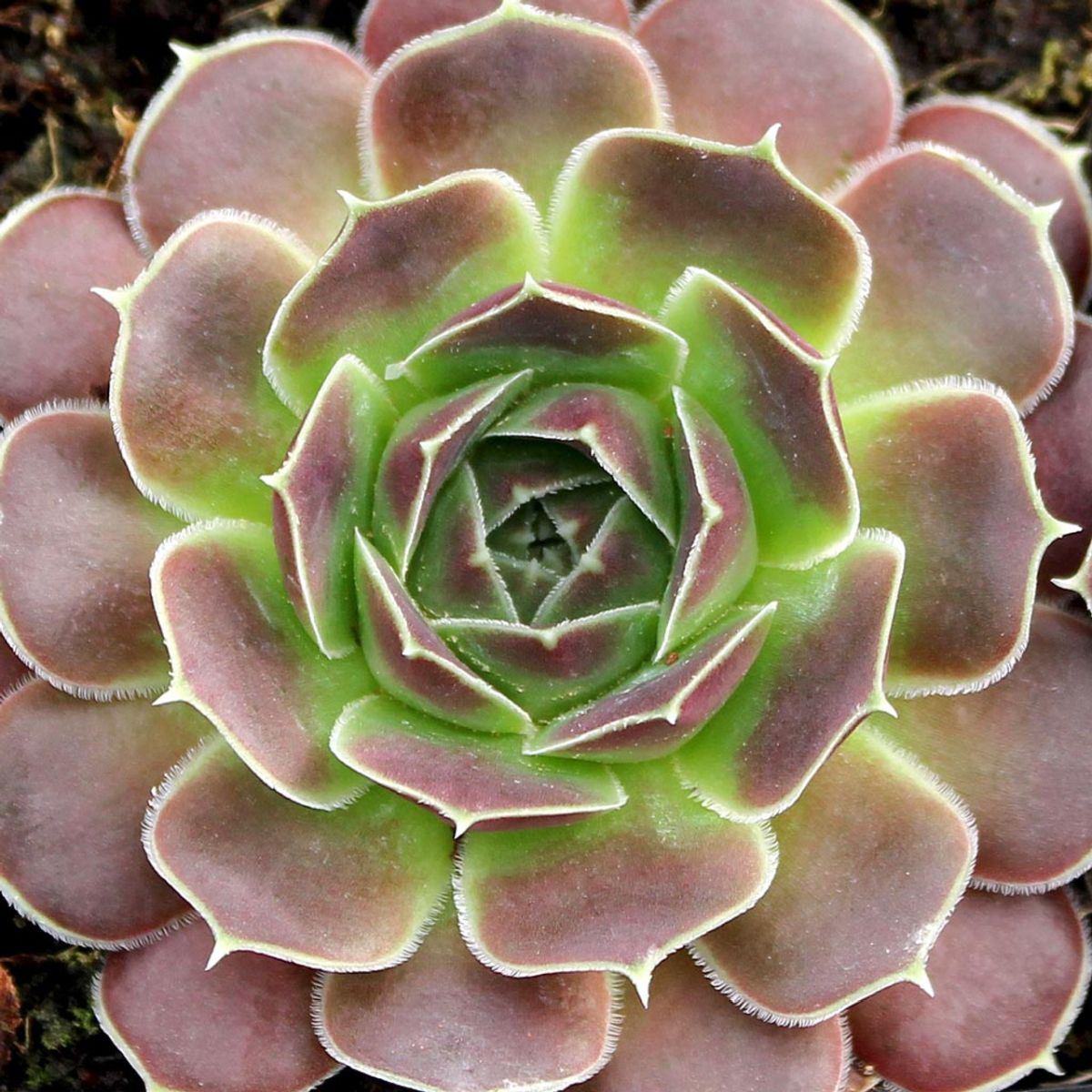
‘Beacon Hill’ has purple bronze rosettes that will keep their color throughout the year. These plants are very drought tolerant and can be grown outdoors in most of the US and as houseplants.
Sempervivum heuffelii ‘Mystique’
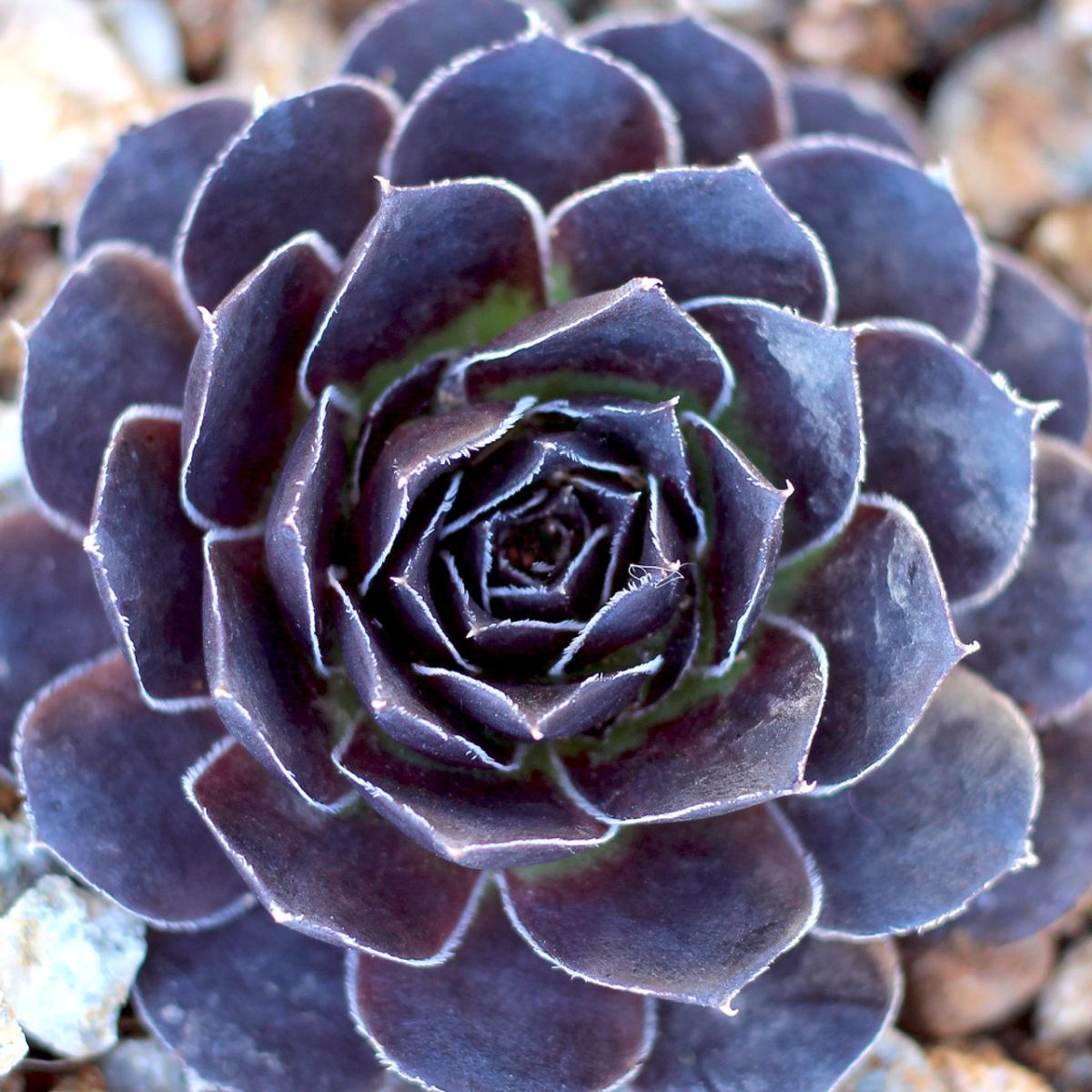
The cultivar ‘Mystique’ has large rosettes with deep purple leaves that turn nearly black in the winter.
Sempervivum heuffelii ‘Notah’
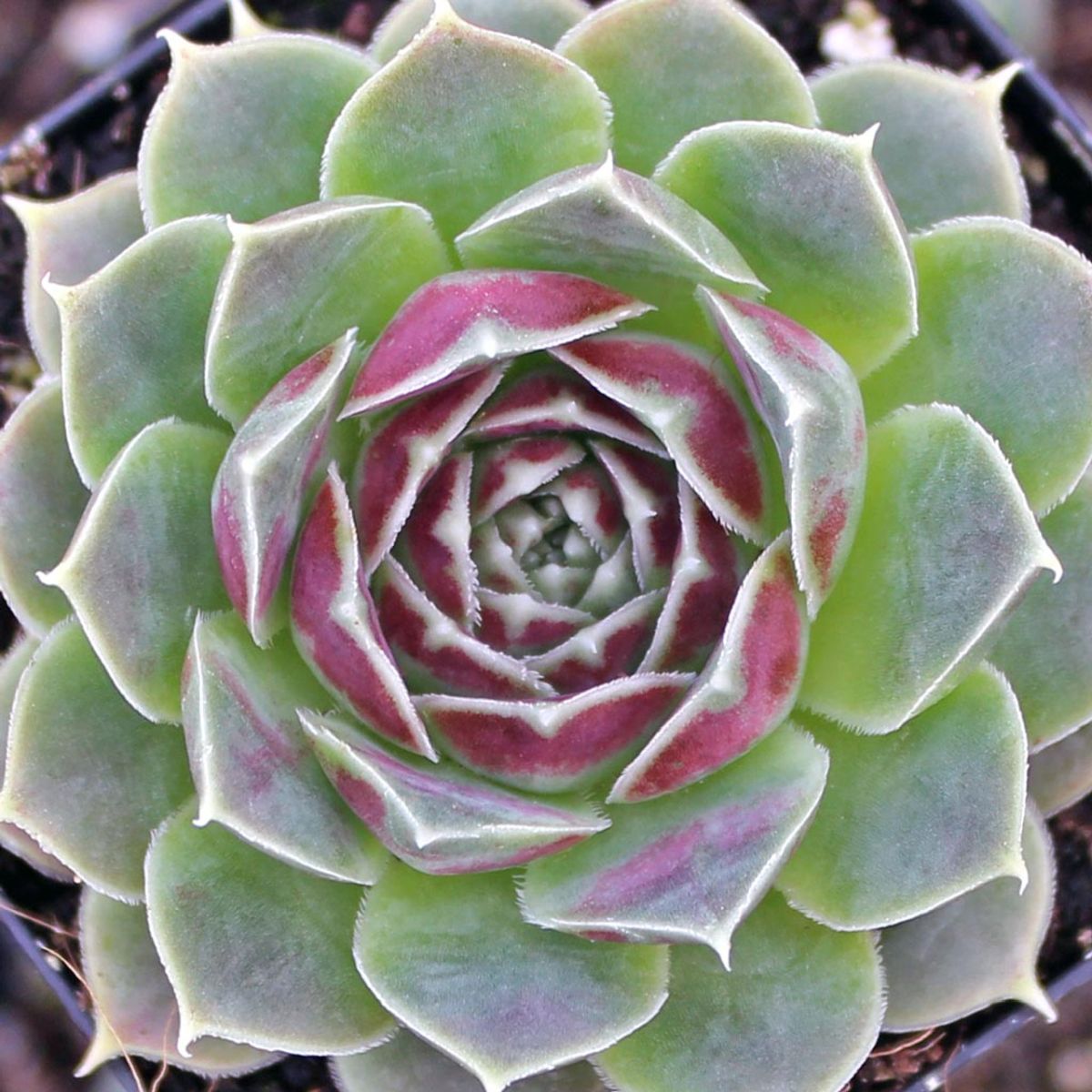
‘Notah’ is a purple and green plant. Its rosettes are jade green with lavender to pink colors. Gardeners who grow this plant often enjoy watching its colors change in different seasons.
Sempervivum heuffelii ‘Purple Haze’
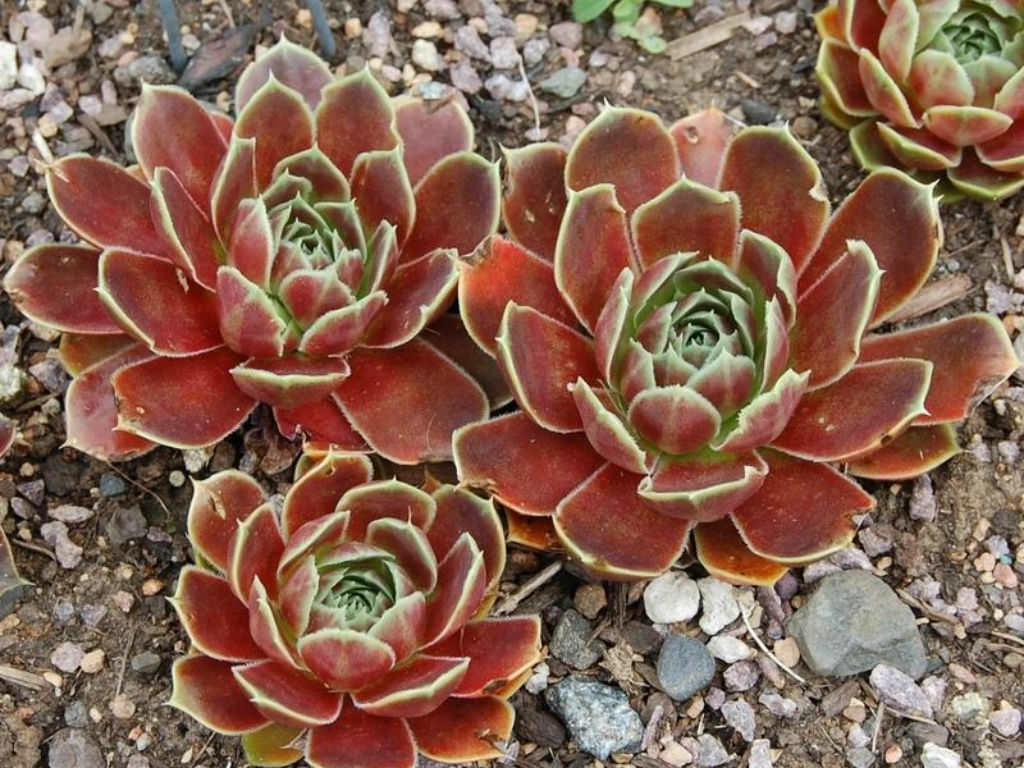
The rosettes of ‘Purple Haze’ range from pink to lavender. They become more colorful in cooler seasons.
Sempervivum heuffelii ‘Violet’
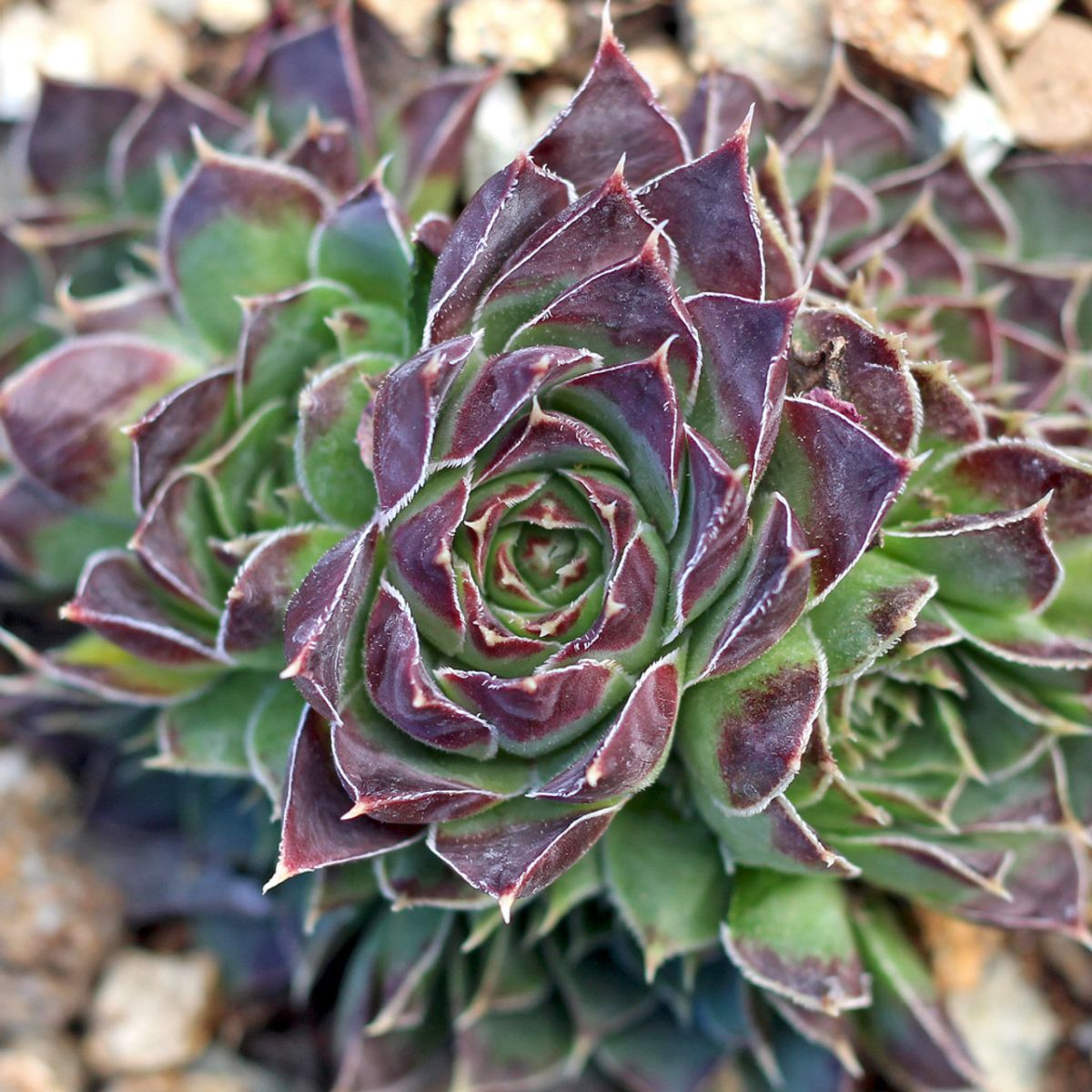
The colors of this cultivar change throughout the seasons and range from red to purple.
Echeveria (Hens and chicks or Mexican Rosette)

Mexican rosette is another large group of succulents. Nearly one dozen different types of Echeveria are commonly grown for their purple leaves. They are also sought out for their attractive flowers.
These plants grow as rosettes, which is part of their appeal. They thrive in high light, which make them popular houseplants. There are many choices of Echeveria with sizes that range from 1.5 inches to more than 3 feet across.
One advantage of growing these types of succulents is that they are easy to propagate. These plants are good ones for gardeners to use to learn the skill of propagation.
Echeveria haagai tolimanensis

The origins of Echeveria haagai tolimanensis are shrouded in mystery, but its unusual characteristics have led to its continuing popularity.
It is an unusual type of Echeveria because it has fleshy leaves that grow upright instead of tight rosettes. Its deep purple to gray leaves can reach 1 foot tall – all the while keeping its leaves that are on its stems.
This plant does not require full sun – it grows well in filtered light or partial sun.
Echeveria haagai tolimanensis typically blooms each summer and produces a tall stalk of yellow to orange flowers.
It is easy to propagate from stem cutting, leaves, and offsets.
Echeveria ‘Black Prince’
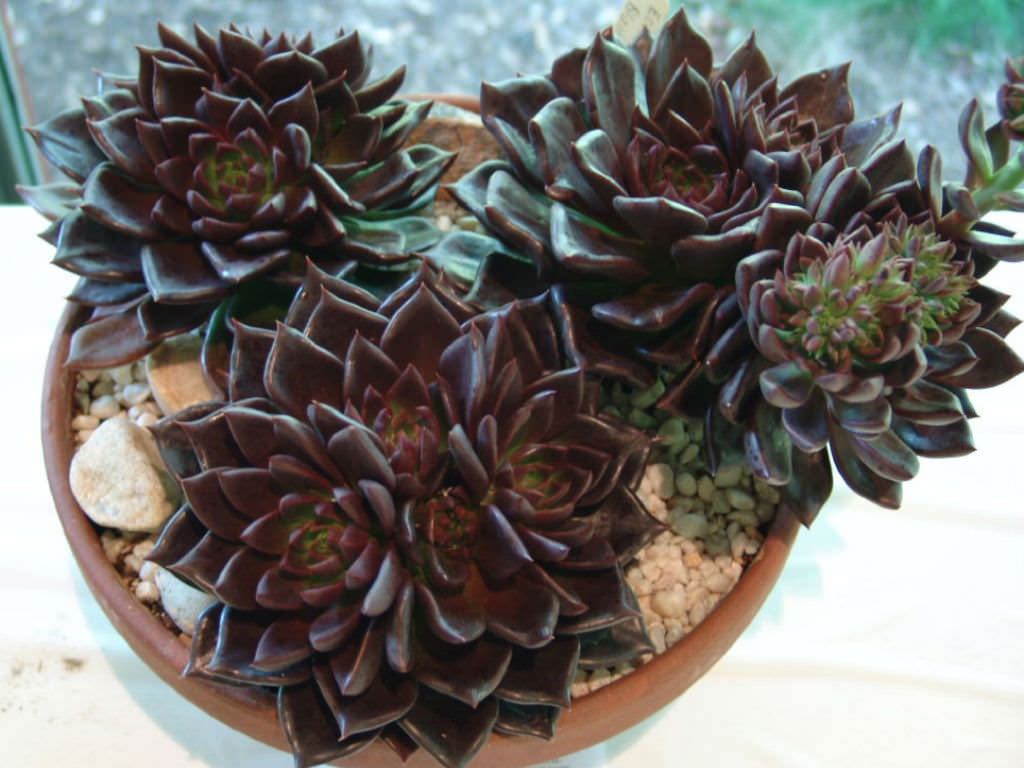
Black hens and chicks come to us from Central and South America. This plant’s unusual appearance and easy care has made it a perennial favorite.
The leaves are pointed at the tips and change in color from green to purple and almost black when grown in bright light. This ability makes it a good choice for gardeners who desire a purple and green plant.
Although slow growing, black hens and chicks can grow to 6 inches (15 cm) in diameter. They produce small red flowers.
Echeveria ‘Chroma’
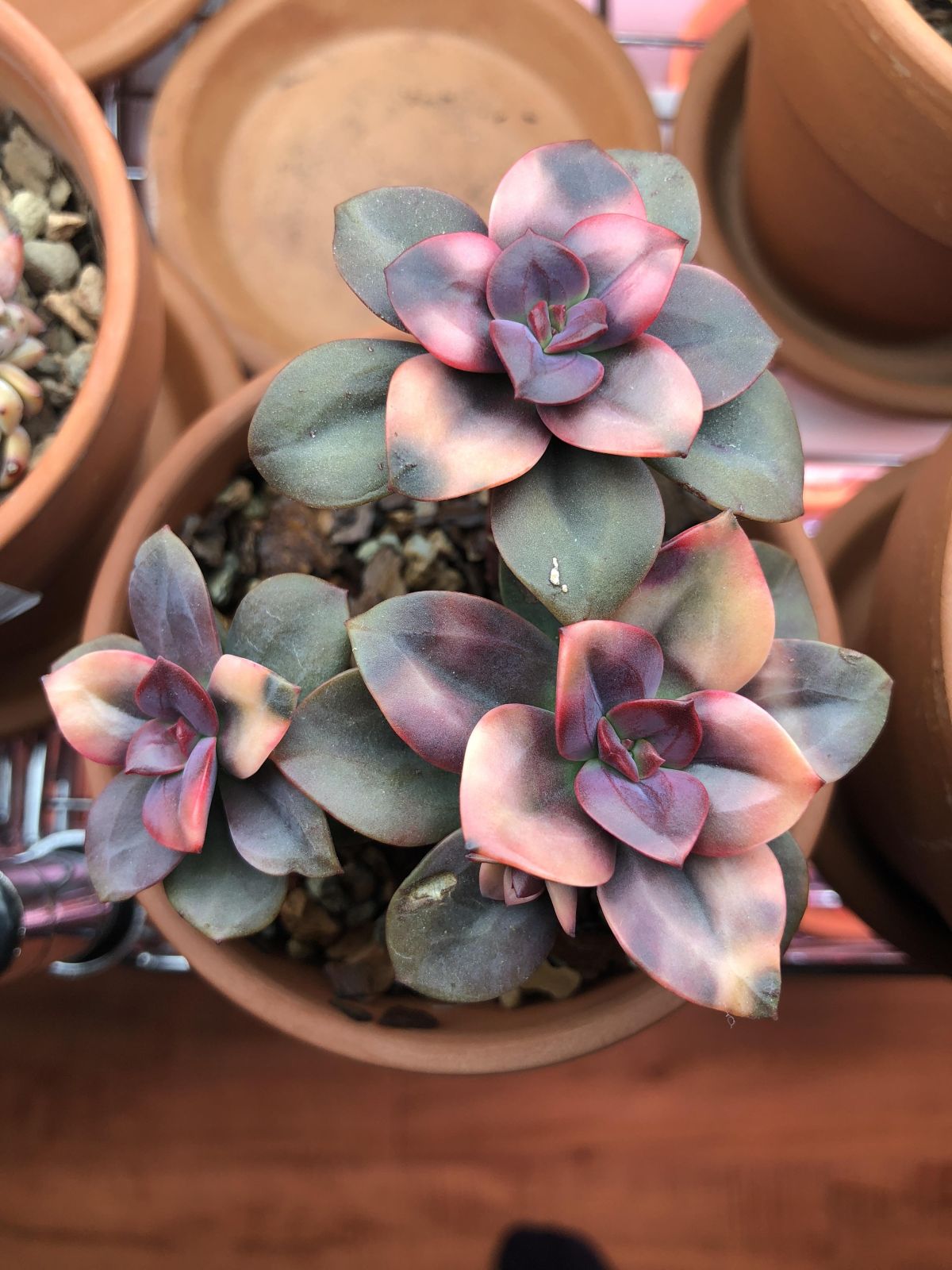
The rosettes of this unusual succulent have swirled purple, blue-green, and peach leaves. These plants can look different depending on the amount of light.
Echeveria ‘Cubic Frost’

Renee O’Connell bred this hybrid of Echeveria, which is variously referred to as “unique” or “one of a kind.”
It is known for its attractive rosettes with upturned leaves. They range in color from gray blue to cool lilac to lilac-pink.
The rosettes vary in how tall they get.
Some experts claim that they grow up to 10 inches (25 cm) tall, while others state that their maximum height is about 8 inches (20 cm) tall.
The color of this plant changes throughout the seasons. It has the most intense purple coloring in the winter and early spring before fading to grayish-blue.
Factors, such as the amount of light and the size of pot, can also affect the intensity of the leaf color. The purple color of ‘Cubic Frost’ is more intense when the plants are in direct sun.
Orange-pink flowers grow on a tall stalk during the winter/spring season.
The plants are exceptionally easy to grow from leaves and are an excellent way for new growers to learn how to propagate succulents.
Echeveria ‘Green Pacific’
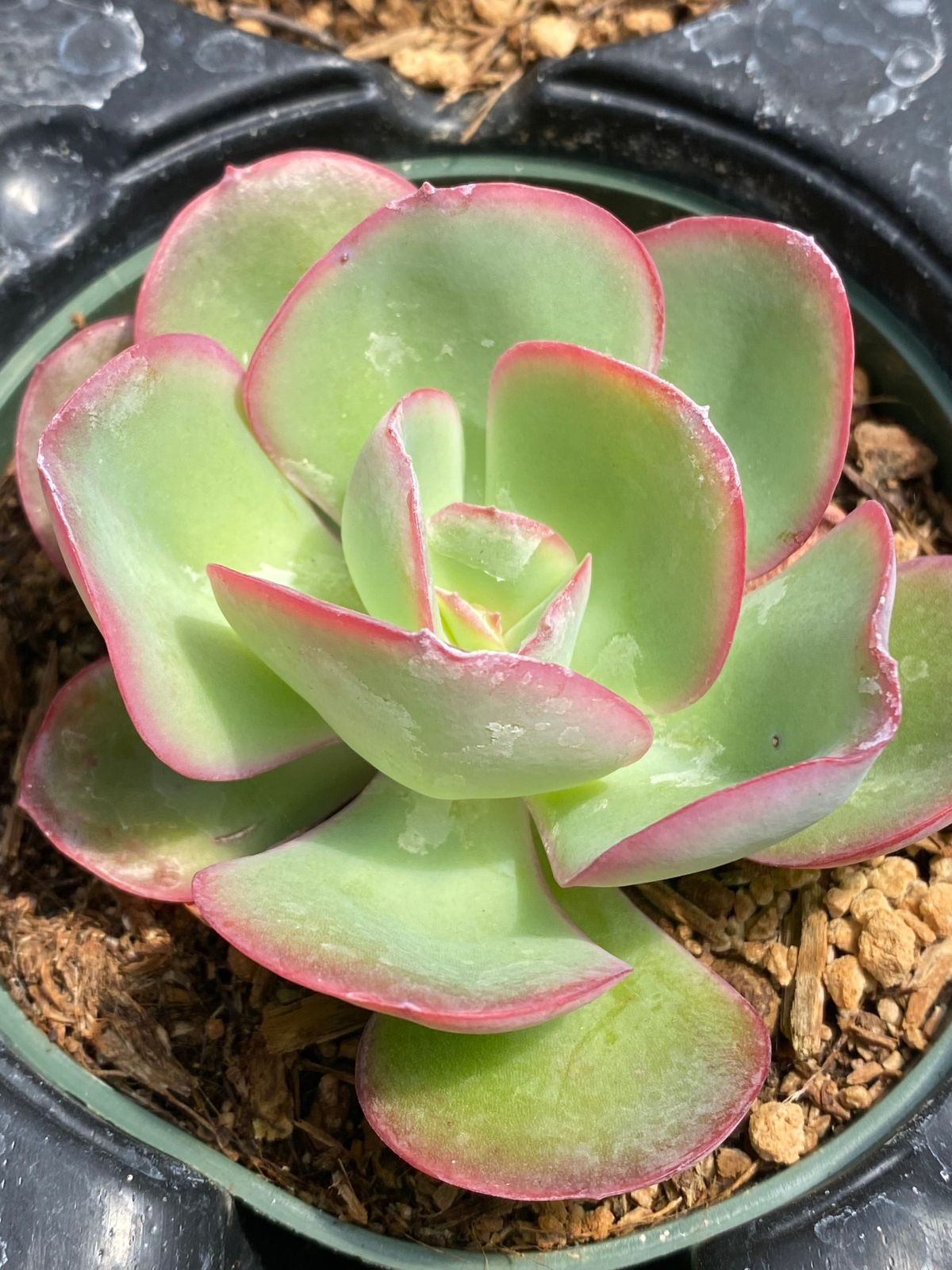
‘Green Pacific’ is highly sought after because of the distinctive colors on its rosettes. The upper parts of the leaves are bright green. The bottom ones are reddish, which surrounds the edge of the leaves.
The leaves also produce a “bloom,” which is a type of wax that protects the plant against strong sun and water loss. Like many other succulents, this cultivar should only be watered every 2-3 weeks.
Echeveria ‘Neon Breakers’

History
‘Neon Breakers’ has an unusual pedigree and is the result of a targeted breeding program by Renee O’Connell of Altman Plants.
You will rarely encounter this when growing succulents, but ‘Neon Breakers’ is patented. That means that it is illegal for you to propagate this cultivar.
Despite this, many websites describe how to propagate ‘Neon Breakers.’
Succulent police will not be pounding at your door if you do this, but many would argue that you should respect others’ intellectual property.
Features
‘Neon Breakers’ is also unusual in many of its characteristics:
· The plant does not go dormant and will grow constantly
· It is extremely tolerant to drought.
· It resists most pests
Appearance
The rosettes can grow more than 8 inches (25 cm) across.
The leaves are highly unusual for Echeveria plants in having frilled edges. They start out a typical blue green with pink tips.
The leaves burst into color when more sunlight is provided. They turn pink, magenta, and deep purple.
Additional purple coloring comes from the stems that grow in the center of the plants to produce pink flowers.
Care
‘Neon Breaker’ requires around 4-6 hours of sunlight a day to thrive. The plants grow best in an East window.
Be careful since too much sunlight can damage the leaves.
Smaller plants are more likely to face damage from bright light. You should consider filtering the sun with a sunshade if you are growing smaller plants.
Echeveria ‘Orion’

The ‘Orion’ cultivar (also known as ‘Fiona’) normally has blue and silvery rosettes with leaves that are pointed and curve upwards. ‘Orion’ grows well in a window that faces south or a bright room that is sunny for most of the day.
The leaf color changes when the plants are grown in full sun – the leaves start flushing from pink to purple.
This type of Echeveria is unusual in that it grows both out and up. This plant can reach 8 inches (20 cm) tall and an equal amount in diameter.
‘Orion’ is a hybrid of Echeveria pulidonis and Echeveria lilacina.
Graptopetalum (Ghost plant)

Ghost plants are popular succulents because they are easily cared for and propagated. They are so named because most types are pale.
The plants produce rosettes on stalks. Ghost plants will often drop leaves from their rosettes, which can be used to grow new plants.
Graptopetalum ‘Purple Delight’ (also known as ‘Snow White’ or ‘Crystal’)
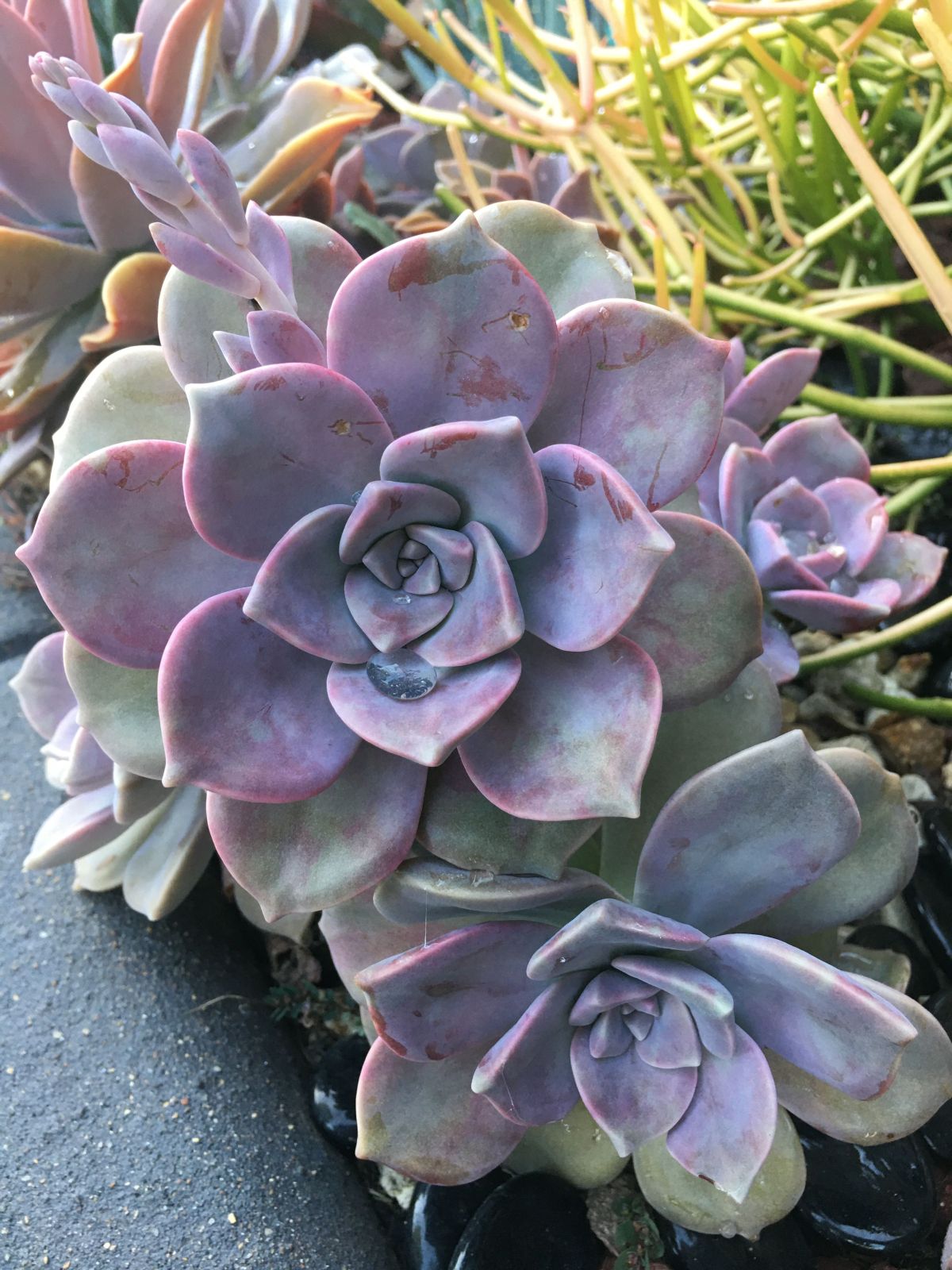
The cultivar ‘Purple Delight’ can produce rosettes in an array of colors depending on how much light it gets. The coloring ranges from dark lilac to pink to even white, and the plants can grow to about 8 inches wide.
Graptopetalum ‘Superbum’
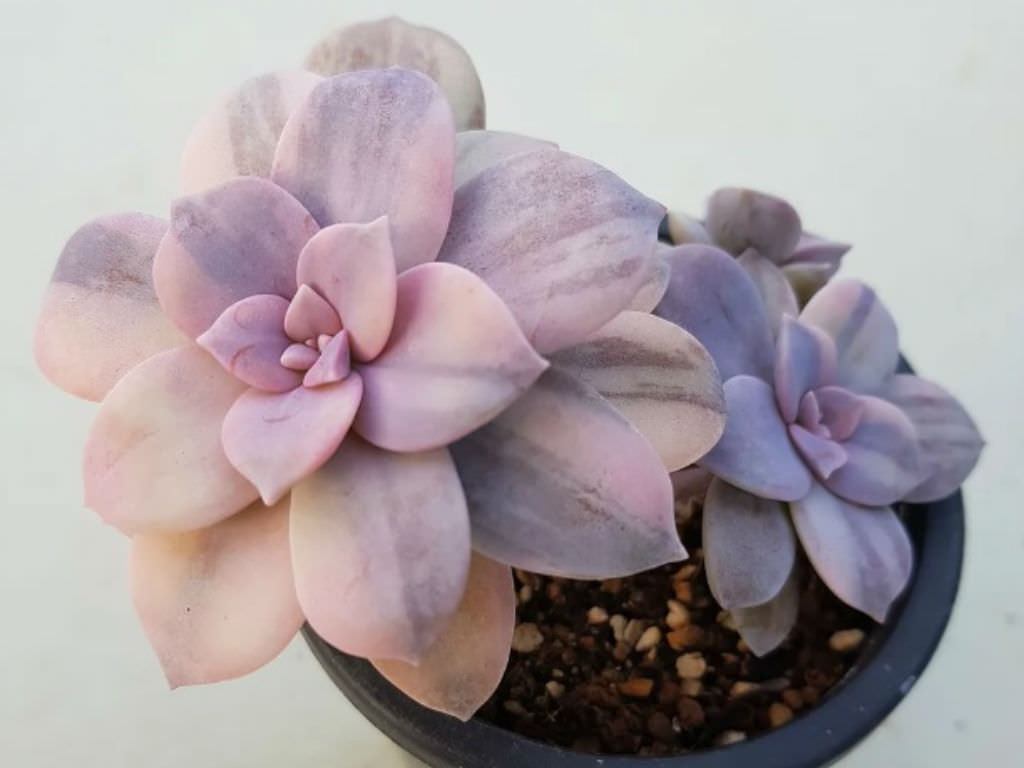
‘Superbum’ is an evergreen succulent known for its purplish coloration and rosettes that can be up to 5 inches wide. These plants are ideal for hanging baskets because their stems grow over the edges of their containers.
They do best in full sun and will drop their leaves if they do not get enough sun. If you do not have a window in full sun, they can be grown in windows that face east or south.
Graptoveria ‘Araluen Gem’
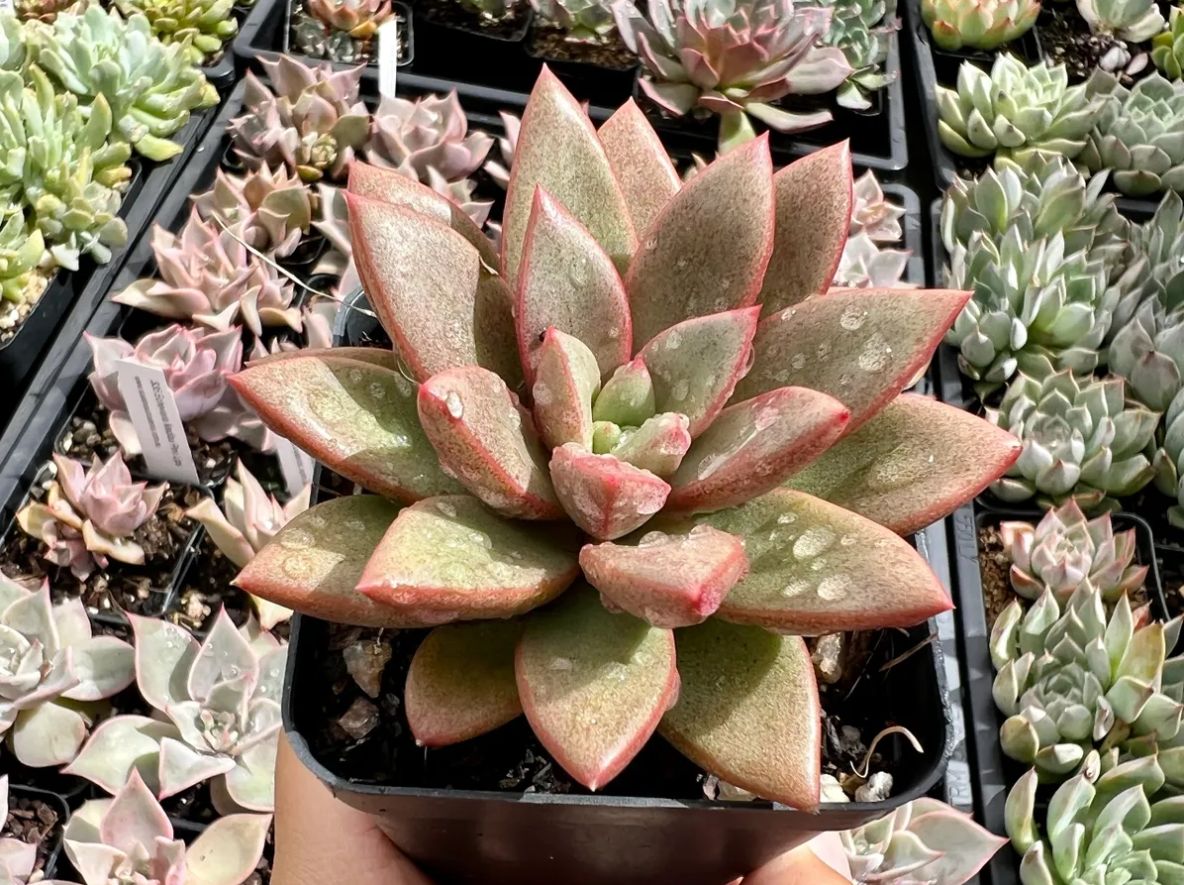
‘Araluen Gem’ was produced by crossing a species of Graptopetalum with one of Echeveria. Both parents are purple succulents, and this hybrid is grown for its green to lilac leaves.
The leaves become tinged with pink if grown in bright light.
Sedeveria

This group of succulents was created by crossing Sedum and Echeveria plants. They are not hardy in cold climates, but they make excellent houseplants.
Their thick leaves produce rosettes that can vary from light green to purple. Several cultivars have leaves that are more intensely purple.
Sedeveria ‘Jet Beads’
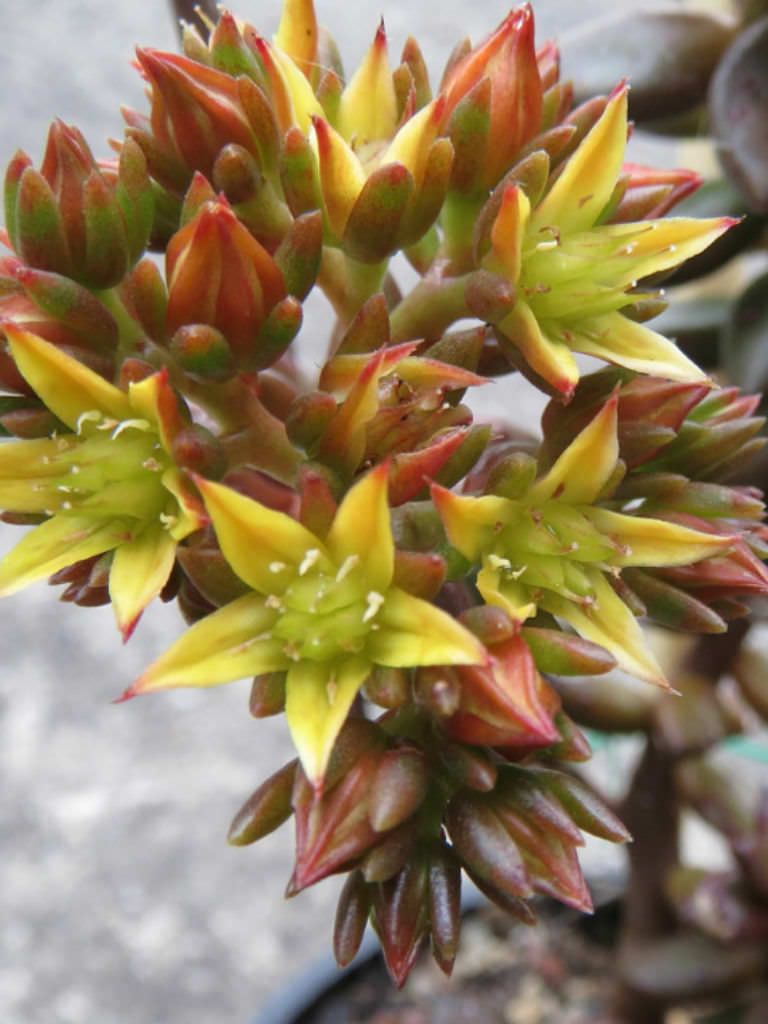
The ‘Jet Beads’ cultivar produces small, pointed leaves that are colored burgundy, copper, green, and black.
Sedeveria ‘Lilac Mist’
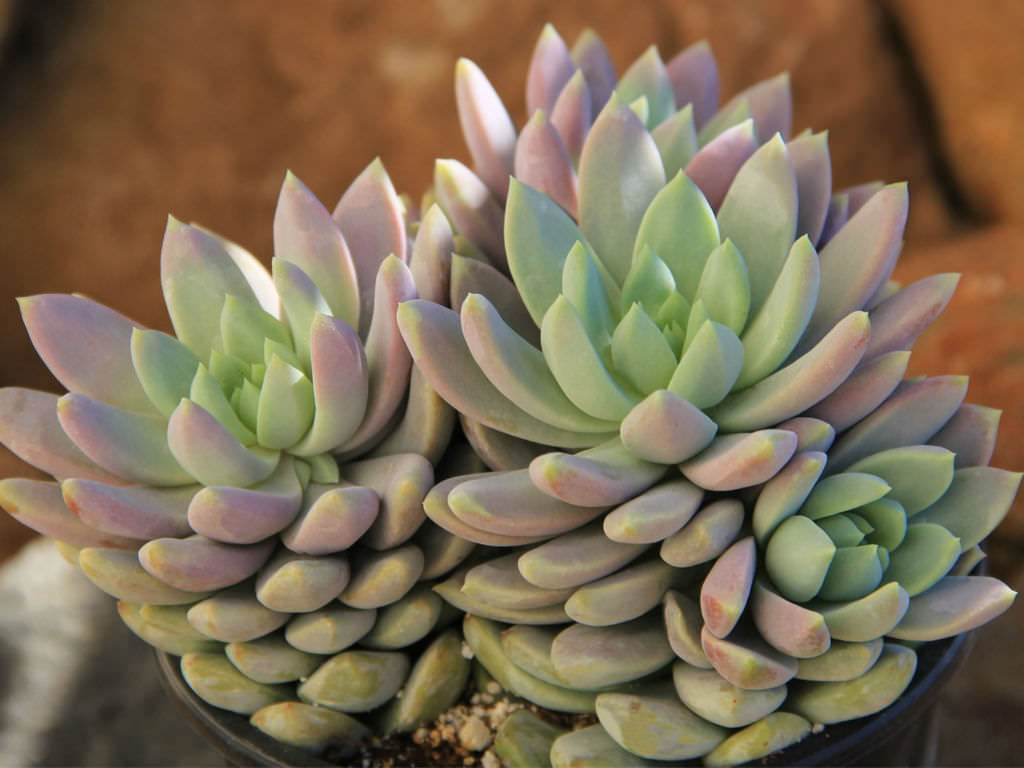
The recent cultivar ‘Lilac Mist’ produces grey-green rosettes that are tinged lilac. The leaves are more difficult to detach than those of other cultivars of Sedeveria. The result is that it is more difficult to propagate these plants.
Aeonium

These succulents are originally from subtropical regions like northern Africa. The cultivars of Aeonium range from 1-6 feet tall, and the smaller types make excellent houseplants. They are striking in dish gardens.
The plants are unusual for succulents in that they have one tuft of leaves at the end of a long stalk. Most of these plants will eventually bloom, and then the stalk dies. It is fortunate that they can go for many years without blooming.
Two award-winning cultivars of Aeonium have deep purple leaves.
Aeonium arboreum ‘Atropurpureum’
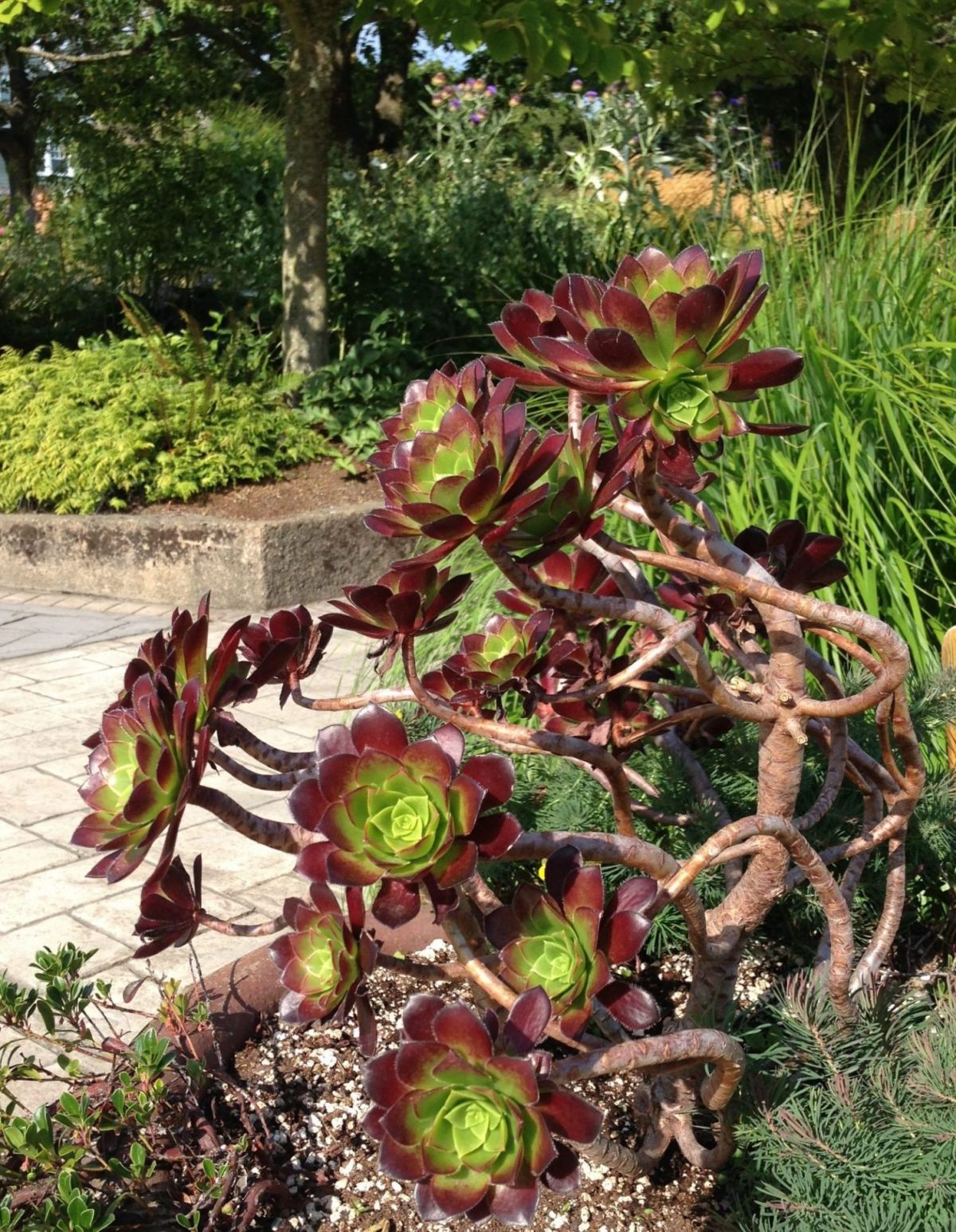
The leaves of cultivar ‘Atropurpureum’ are dark purplish-red when the plants are grown in full sun. They can grow to 3 feet tall.
It received an Award of Garden Merit from the United Kingdom Royal Horticultural Society in 1999.
Aeonium arboreum ‘Schwartzkopf’
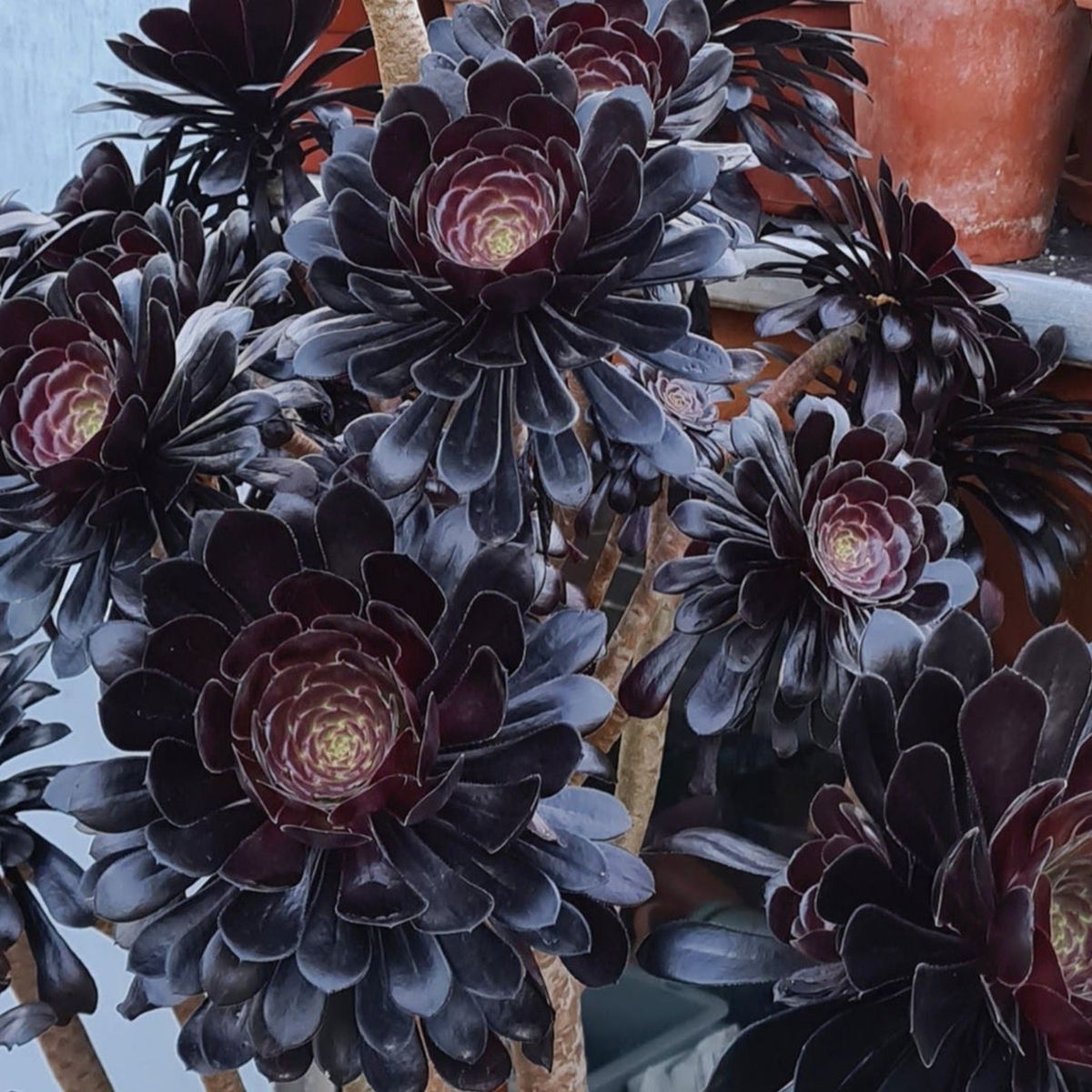
The cultivar ‘Schwartzkopf’ is known for its intensely dark purple leaves that look almost black.
It can grow as high as 3 feet when planted outside but will stay smaller as a houseplant.
This plant also received an Award of Garden Merit.
Frequently Asked Questions
There is no hard or fast rule and will depend on the heat and humidity of your home. The main thing is not to overwater them. Some purple succulents can go as long as 2-3 weeks without watering. Check whether the soil is dry before you water your plants.
Your best bet is to buy a commercial succulent mix that is sold in most garden centers.
Sempervivum is probably the easiest type to grow. It survives cold weather and also grows well in warmer climates.
The answer depends a great deal on what type of climate you live in. Many gardeners grow purple succulents in their yard and bring them back inside over the winter. If you live in a warmer climate like southern California, you can grow most of your succulents year-round in your yard. If you live in a colder climate, types of Sempervivum would be your best bet to have year-round. Many of them can survive in zone 4a, which is in the northern US and many mountainous areas in states like Arizona.
While there are pests you need to keep an eye out for, most succulents are killed by overwatering. The common practice can result in root rot, which is usually fatal.





